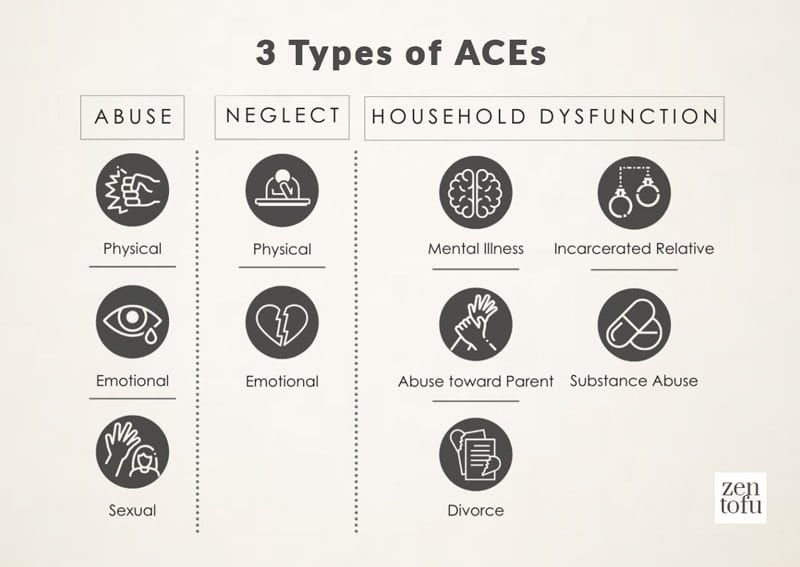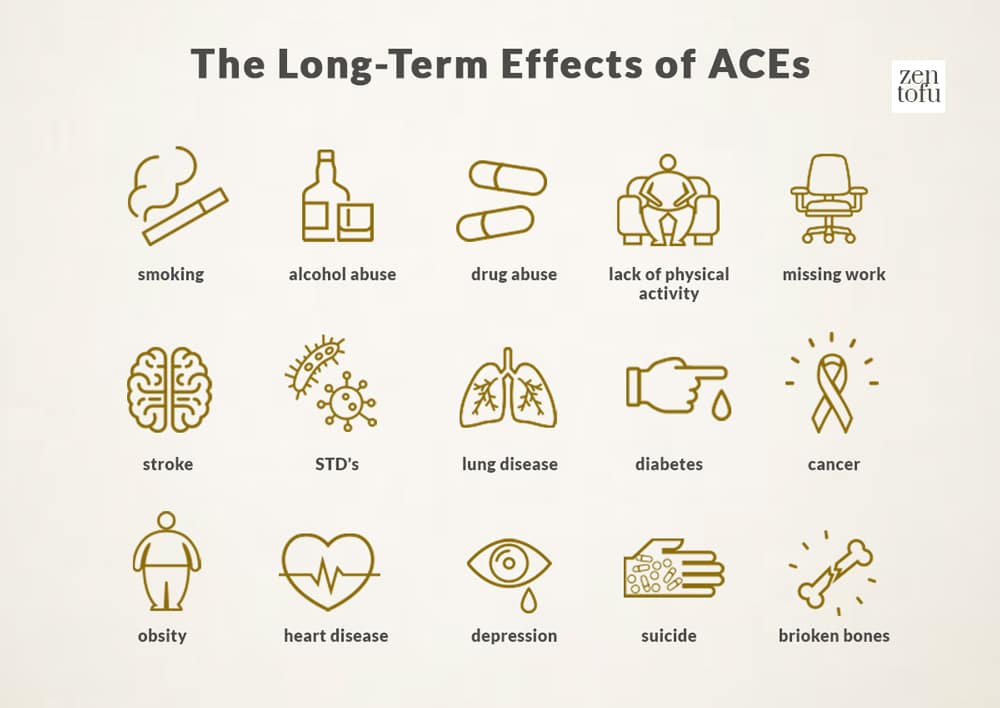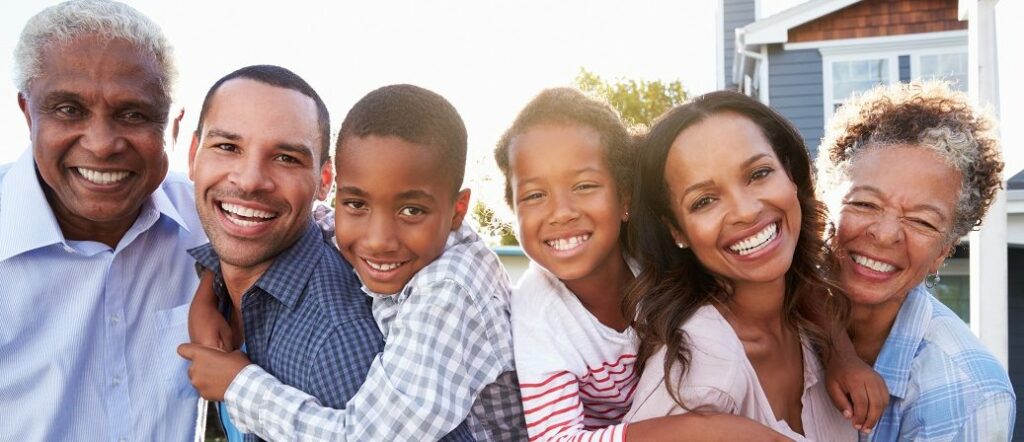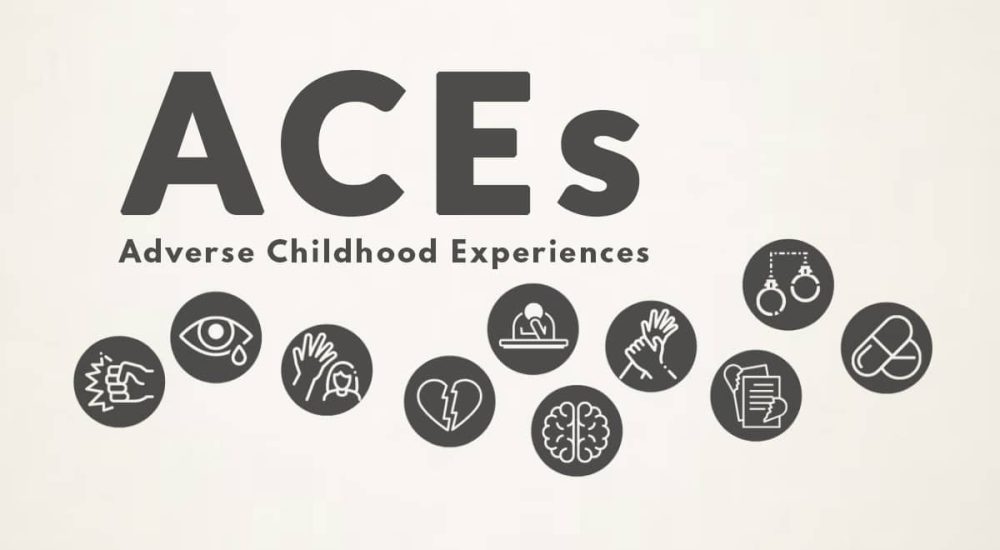In this blog post, I will share about Adverse Childhood Experiences (ACEs).
ACEs are traumatic events that can occur during childhood and have a lasting impact on an individual’s health and well-being. In this post, I’ll talk about what ACEs are, the ACE Study and its findings, and the long-term effects of ACEs. I’ll also discuss strategies for preventing and addressing ACEs, and the importance of resilience in how individuals respond to ACEs.
I hope this post will provide you with a greater understanding of traumatic childhood experiences and their long-term effects. Let’s get started!
Background: the original ACE Study
The original Adverse Childhood Experiences (ACEs) Study was a groundbreaking collaborative research project conducted by the Centers for Disease Control and Prevention (CDC) at Kaiser Permanente from 1995 to 1997. Over 17,000 people from a middle-class area who had received physical exams were also asked to complete confidential surveys regarding their childhood experiences and current health status and behaviors.
During the study, the adults were given a survey asking about 10 different types of ACEs ranging from abuse, neglect, and household dysfunction, and if they had experienced them prior to the age of 18.
Based on the responses of participants, each person was given an “ACE score,” which reflected the number of ACE categories they had experienced. The higher the ACE score, the more childhood trauma the participant had experienced.
10 Types of Adverse Childhood Experiences
There are 10 Adverse Childhood Experiences (ACEs) which are grouped into 3 categories:
- Abuse
- Neglect
- Household dysfunction
It’s important to note that children across all races/ethnicities and income levels experience adverse childhood experiences (ACEs); however, studies have confirmed that historically excluded children and families (e.g., Black, Indigenous, People of Color also referred to as people of the global majority) experience additional challenges and are more likely to experience ACEs as a result of systemic inequality and how it shapes their identities and lived realities.

Abuse
1. PHYSICAL ABUSE
Physical abuse is any form of harm that is inflicted intentionally, rather than by accident. It can include injuries such as bruises, cuts, or broken bones, which are caused by pushing, grabbing, hitting, punching, kicking, shaking, beating, burning, throwing something, or stabbing.
2. SEXUAL ABUSE
Child sexual abuse refers to the involvement of a child (person under the age of 18) in sexual activity or exploitation that is against the laws or social norms of society. This can include situations where the child:
- does not fully understand the nature of the activity
- does not consent to or is unable to give informed consent to the activity
- is not developmentally ready to give consent to the activity
Sexual abuse also includes acts such as indecent exposure and using a child for prostitution or pornography.
3. EMOTIONAL ABUSE
Emotional abuse is any behavior that negatively impacts a child’s mental health. This type of abuse includes verbal abuse, mental abuse, and psychological maltreatment. Emotional abuse can take many forms, such as:
- Threatening the child
- Refusing to acknowledge the child’s emotional needs
- Belittling or demeaning the child
- Rejecting or ignoring the child
- Ridiculing or mocking the child
- Blaming the child for things that are not their fault
- Isolating the child
- Restricting the child’s social interactions
- Purposefully not talking to the child for extended periods of time
Neglect
4. PHYSICAL NEGLECT
Physical neglect is the failure to provide for a child’s basic needs, such as food, clothing, shelter, and medical care. It also includes a lack of supervision or appropriate supervision.
5. EMOTIONAL NEGLECT
Emotional neglect is the failure to meet a child’s emotional needs, such as providing social support or necessary mental health treatment. This can include ignoring a child’s needs or emotions, such as if a baby cries and no one attends to the child.
Household Dysfunction
6. MENTAL ILLNESS
Living with a relative who has a mental health issue can greatly affect a child. Depending on the disorder, the parent may not be able to adequately care for the child or model appropriate behaviors.
7. INCARCERATED RELATIVE
Having a parent who is incarcerated can be difficult for both the parent who is at home and the child. The child may experience trauma or feelings of abandonment and may have grown up in a single-parent household. The absent parent may also have modeled inappropriate behaviors before being imprisoned.
8. PARENT TREATED VIOLENTLY
Any form of violence in the home is traumatic for a child, especially if they witness violence towards their primary caregiver, who is often the mother. The child forms a strong attachment to their mother and relies on her for care, so seeing her hurt, especially by another loved one, can be deeply traumatic.
9. SUBSTANCE USE
Substance use in the home can create unsafe conditions for a child. The parent may not be able to properly care for the child, and there may also be other forms of abuse or domestic violence associated with substance use.
10. DIVORCE
Divorce can have negative impacts on children. Some divorcing parents may expose their children to verbal or physical fighting or may ignore the child while they work through their relationship issues.
Children may feel that they are responsible for the divorce, and custody disputes can make them feel unloved or pulled in different directions. The child may also learn unhealthy communication and coping skills.
What did the ACEs Study find?
The results of the ACE Study were eye-opening. According to the CDC 1 in 6 adults experienced four or more types of ACEs.
Researchers found that ACEs were incredibly common, with over two-thirds of participants reporting at least one ACE, and 87% of those who reported one ACE also reported experiencing additional ACEs. The more ACE categories an individual had experienced, the greater their risk for a variety of negative health outcomes such as depression, obesity, heart disease, cancer, chronic lung disease, and a shortened lifespan.
The Long-Term Effects of ACEs
For example, having 4 ACEs was associated with:
- Twice as likely to smoke cigarettes
- 7 times increase in the risk of alcoholism
- 12 times more likely to have injected drugs
- 2 times increase in the risk of being diagnosed with cancer
- 4 times increase in the risk of developing emphysema
An ACE score above six was linked to:
- 30 times (3000%) increase in the risk of attempted suicide.
The effects of ACEs were not limited to overall health, mental health, and substance abuse. The study also found that a person with higher ACE scores was at increased risk for engaging in risky behaviors, unhealthy diet and exercise habits, unsafe sexual practices incarceration, and employment challenges.

Intergenerational Effects of ACEs
For some families, the dysfunction, abuse, and neglect are so extreme and constant that it becomes traumatic and affects the physical health and brain development of the young children growing up in those environments.
If these children don’t get the support they need to address their Adverse Childhood Experiences (ACEs) as they grow up, they may continue to repeat the patterns they learned in their own childhoods and bring dysfunction into the lives of their own children. This is what we call the cycle of intergenerational trauma.
Learned Helplessness
Intergenerational trauma isn’t just a matter of repeating learned behaviors; it’s also an issue of brain development. Some family members may exhibit a behavior called “learned helplessness,” where they feel powerless to change their situation despite repeated adverse experiences. They may stop trying to improve their circumstances, even when positive alternatives are presented.
The impact of toxic stress on our genes
Our genes are the instructions for making proteins in our bodies, which are necessary for all the processes that make us human. Epigenetics is the study of how our genes are turned on and off, or whether they are used or not. It turns out that our life experiences can change our epigenetic profile, or in other words, they can change our genes. This can have a big impact on us, and it can even be passed down to future generations through our genes. Stress can really get under our skin and affect us in more ways than we realize.

Expanded ACEs
Subsequent studies, such as The Philadelphia ACE Project have expanded the research to include an examination of ACEs among inner-city youth and the impact of intergenerational trauma. Expanded ACEs consist of additional items that measure exposure to:
- community violence
- neighborhood safety
- racism
- bullying
- living in foster care
It’s important to note that not everyone who experiences ACEs will go on to develop negative health outcomes. The concept of resilience, or the ability to bounce back from adversity and cope with stress and challenges in a healthy way, plays a role in how each person respond to ACEs. Some people are naturally more resilient than others, but resilience can also be developed through supportive relationships, a sense of purpose and meaning, and healthy coping mechanisms.
Prevention of ACEs
The findings of the ACE Study highlight the importance of addressing and preventing childhood trauma. There are many ways in which we can work to prevent ACEs and support the well-being of children, including:
- Providing resources and support to families in need
- Implementing policies that promote child safety and well-being
- Supporting programs that teach parenting skills and promote healthy family dynamics
- Educating communities about the importance of child well-being and how to recognize and address signs of trauma

Intervention in ACEs: Preventing toxic stress
Exposure alone doesn’t necessarily mean a child will suffer from the long-lasting negative effects of ACEs. When the ACE is prevented from causing toxic stress, harm can be prevented.
Early Intervention
Early intervention and support can be crucial in preventing negative health outcomes. This can include:
- Provide a nurturing, safe and stable environment (eg. seeking out supportive relationships)
- Help children learn to cope with adversity and practice healthy coping mechanisms
- Helping children engage in activities that bring a sense of purpose and meaning
- Reduce a child’s ACE exposure.
Building Resilience: the power to bounce back
Resilience is the ability to recover from or adjust to adversity. Exposure to Adverse Childhood Experiences (ACEs) can be overwhelming and damaging, but with a caring and nurturing environment, we can help children develop resilience and the ability to bounce back from difficult situations. With resilience, they can better cope with the negative effects of ACEs and develop the strength to thrive in the face of challenges.
7 C’s to Forster Resilience
Here are 7 core ideas to help develop and foster resilience in children:
- Competence – Building their understanding of their skills.
- Confidence – Helping kids grow a true belief in their own abilities.
- Connection – Connecting children with other people, schools and communities to further build their support system.
- Character – Helping them comprehend a clear sense of right and wrong, and teaching them moral values.
- Contribution – Offering children a chance to contribute to the well-being of others. They learn that giving service feels good and then feel more confident to ask others for help as well.
- Coping – Discovering a variety of healthy coping strategies to prevent children from dangerous “quick fixes” to stress.
- Control – Teaching children to make decisions on their own so they can experience a sense of control.
Additional Ways to Encourage Resilience
Some additional ways to encourage resilience in children who have experienced ACEs include:
- Recognizing and acknowledging the impact of the child’s ACEs on their behavior and emotions. Moving from the narrative of “What’s wrong with you?” to “What happened to you?” (You can read What Happened to You: Conversations on Trauma by Bruce D. Perry and Oprah Winfrey)
- Helping children to understand and express their emotions in healthy ways
- Encouraging children to develop problem-solving skills and work through challenges
- Supporting healthy habits such as meditation, exercise, and proper sleep routines as coping strategies.
Working Together to Build a Better Future
Adverse Childhood Experiences (ACEs) can have significant and long-lasting effects on the health and well-being of children and our communities.
Remember, we all have a role to play in providing better futures for children. Every person has the power to make a positive impact on the well-being of children in their community, and it starts by learning more about ACEs. By working to create safe and supportive environments for children, we can help reduce the prevalence of ACEs and build a healthier future for all.






